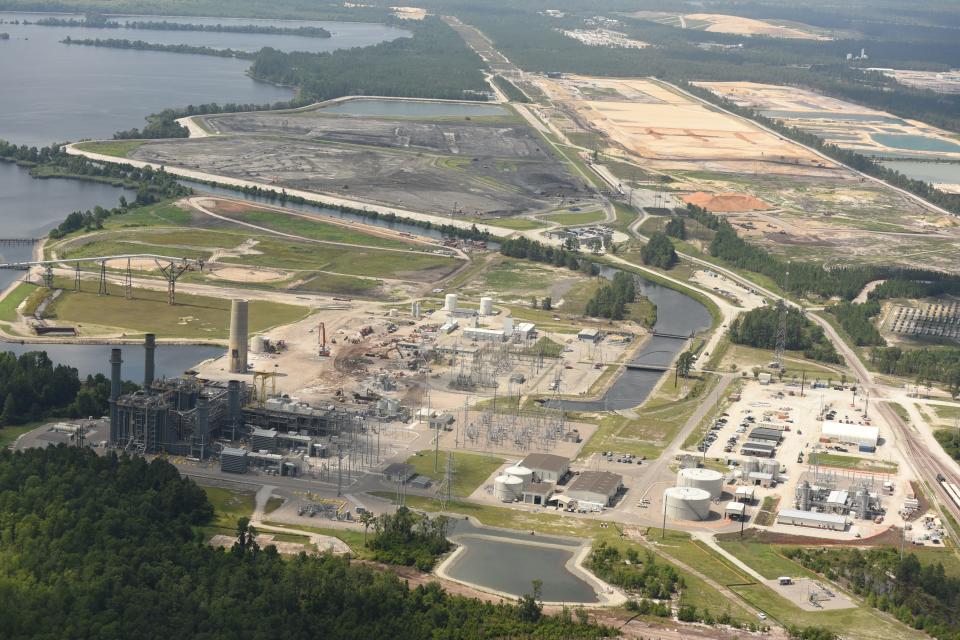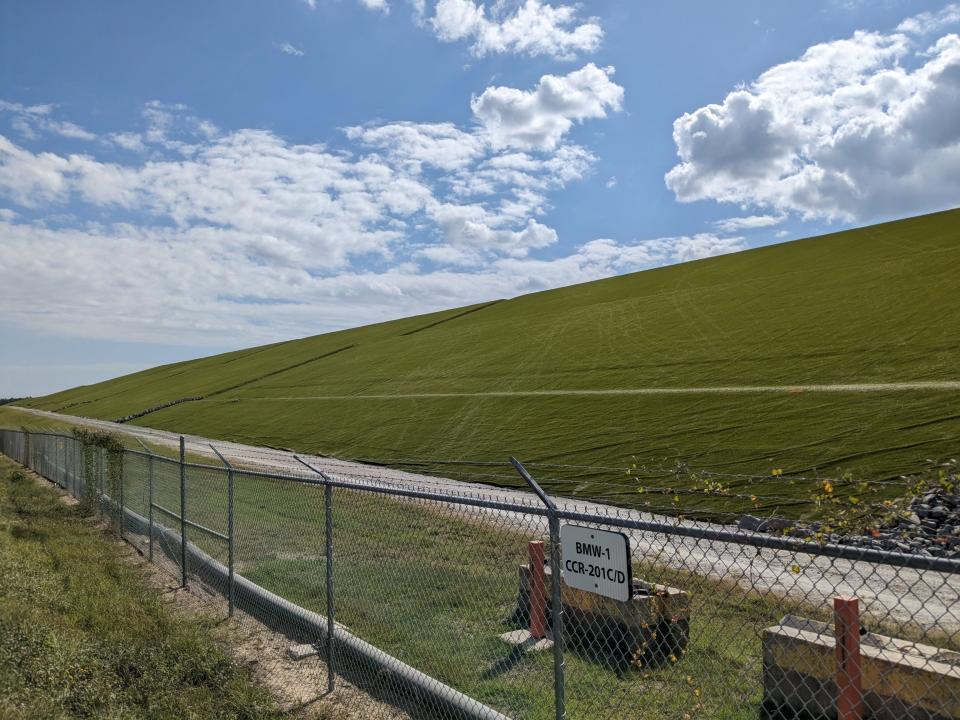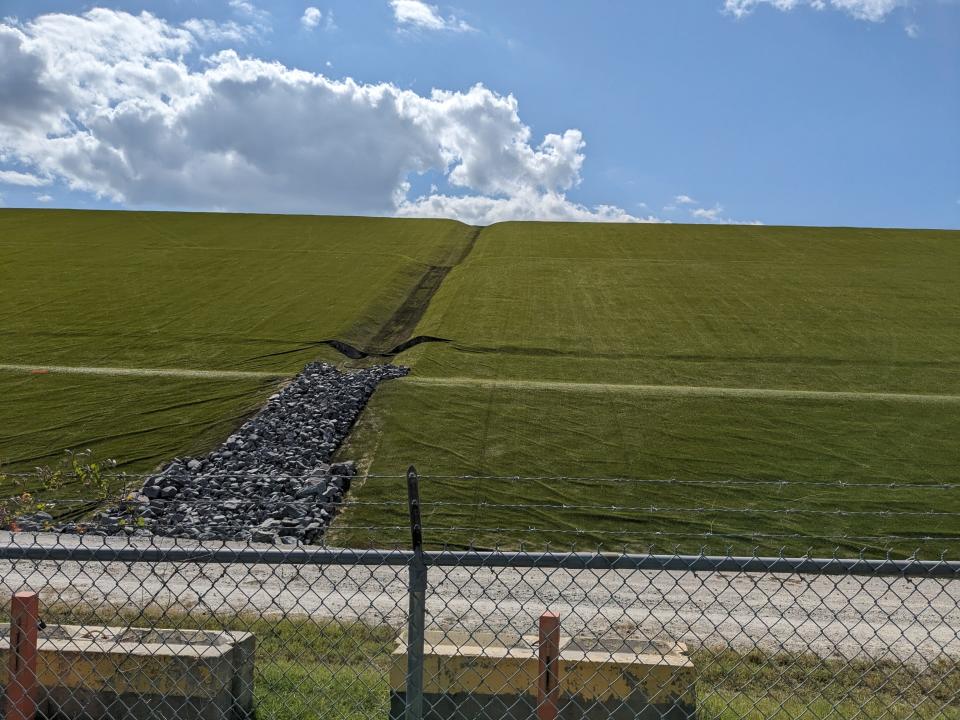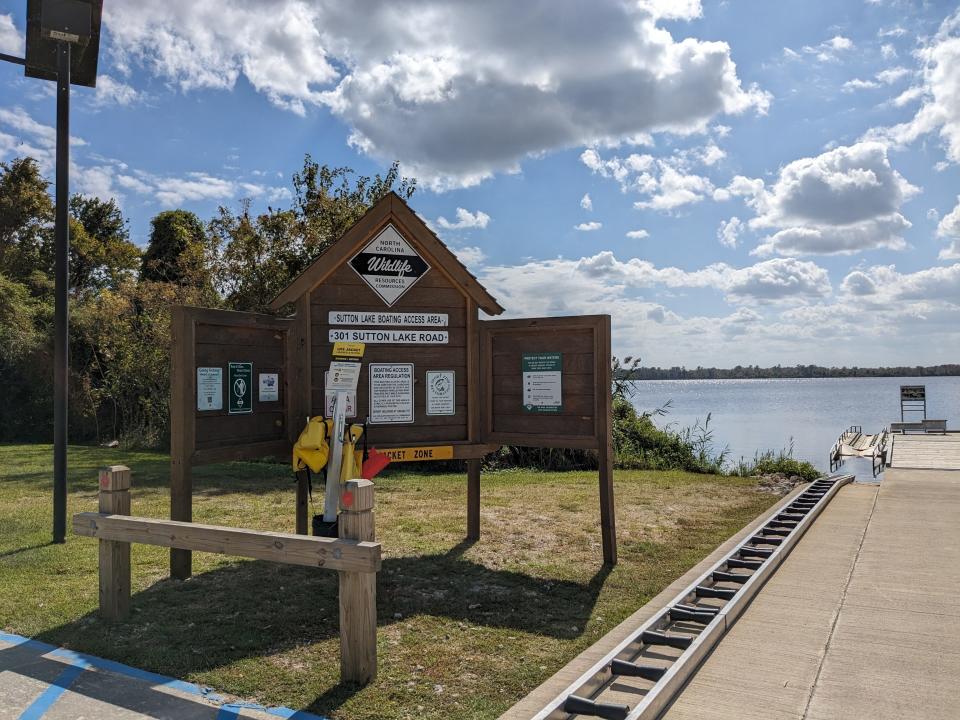Duke's Sutton coal plant closed in 2013, but most of the ash is still there. Is that bad?
Bumping along the shoreline of Sutton Lake looking to avoid running over any submerged tree trunks or getting his fishing line snagged, C.J. Refner peered over at the nearby green-covered landfill and Duke Energy natural gas plant that replaced an old coal-fired plant a decade ago.
"I'm glad they dealt with the coal ash and got a bit cleaner," he said of the utility giant as he wiped his brow under the warm October sky. "Also glad they left the lake because there is good fishing in here."
The remnants of the Sutton Plant's past power history might no longer be visible, but they are still there. So are wells and other testing measures to make sure the coal ash that remains at Sutton and that seeped into the groundwater over decades stays on the energy plant's sprawling campus and doesn't threaten drinking water supplies for nearby residents.
As the Wilmington area remembers the extensive damage wrought by Hurricane Florence five years ago and the push to rapidly move North Carolina's energy network toward a cleaner, greener grid continues to cause political squabbles in Raleigh today, here's a quick look at where millions of tons of Wilmington's coal-ash legacy ended up.

APPLYING THE BRAKES Plastic bags and EVs in the slow lane: What does NC's new budget mean for the environment?
Where is Sutton Plant's old coal ash today?
Decades of coal burning at Sutton, which opened in 1954, left tons of ash silt behind. For decades, the coal ash was stored on site in several large basins − a practice that also was the norm at Duke's other coal-fired plants scattered around the Carolinas.
But in 2014 a massive spill into the Dan River soiled nearly 70 miles of the river in North Carolina and Virginia with 40,000 tons of toxic sludge. The accidental release prompted state regulators to order Duke to clean up its open coal-ash basins, with Sutton designated one of the first to be remediated due to the plant's proximity to the Cape Fear River and nearby residential areas.
Duke spokesman Bill Norton said of Sutton's more than 7 million tons of coal ash, approximately 2 million tons was transported − much by rail − to a lined mine fill-site in Chatham County. That wrapped up in 2017. The remaining material is in a lined landfill that's topped with a synthetic material on the Sutton property, with excavation of the plant's coal-ash basins wrapping up in 2020.

ON THE MOVE Permit approved, Duke starts delivering coal ash to Sutton landfill
So if the ash is still there, could there still be contamination concerns?
Norton said monitoring wells scattered around the Sutton site keep an eye on any spread of contaminated groundwater from the old basins. Groundwater extraction wells also are helping with the remediation process, he added.
The lined landfill, similar to the type used at the nearby New Hanover County landfill to prevent polluted leachate from escaping into nearby water supplies, has been capped with synthetic turf and is rated to withstands winds of a Category 3 hurricane, which can reach more than 120 mph.
"Extensive scientific testing demonstrates drinking and recreational water supplies remain safe from ash impacts, and we'll continue monitoring for decades to ensure that remains the case," Norton said.
Under a plan agreed to between Duke and state regulators, monitoring will continue through at least July 2050.

What about Sutton Lake?
The 1,100-acre lake that used to cool the coal-fired boilers remains a popular bass fishing area for local anglers. Environmental concerns, though, persist about fish that swim in the manmade impoundment north of Wilmington.
In 2017 a Duke University study found levels of selenium, a potentially toxic chemical, in fish caught at the lake at levels higher than the U.S. Environmental Protection Agency (EPA) considers safe to eat. That prompted some local legislators to seek stepped-up warnings by state health regulators.
Mother Nature also has taken recent shots at the lake. In September of 2018 Hurricane Florence dumped nearly 30 inches of rain on the area, causing an earthen dam to break at the lake. Floodwaters also caused coal ash to spill from the lined landfill then under construction. A section of nearby U.S. 421 was washed away by the surging water.
After the event, Duke Energy released a statement that the lake's water quality had not been impacted by the 2,000 cubic yards of soil and ash that had spilled. Environmentalists said they believed Duke was downplaying the size of the spill and its impacts on the local ecosystem, as it had with past impacts from coal ash on Sutton's water quality and health of its fish population.

TOXIC WATERS? Mercury levels in Sutton Lake fish a concern
Duke officials bristled at the accusations, calling questions about the lake's health "misleading speculation."
Cape Fear Riverkeeper Kemp Burdette said toxins associated with the decades of coal-ash residue escaping into area groundwater and the lake plus contamination from mercury and "forever chemicals" like GenX that pollute many waterways in North Carolina remain a concern at Sutton Lake.
But he said overall, even with the lack of signs at Sutton warning fishermen about the potential of fish to be contaminated, the situation appears to be manageable. That includes much lower chances of having a similar Florence-like spillage, which hit when crews were still building the lined landfill.
"The clean-up job is done, but I don't think anyone would say everything is perfect," Burdette said. "But I think most people would say it's pretty good at Sutton Lake right now."
Reporter Gareth McGrath can be reached at GMcGrath@Gannett.com or @GarethMcGrathSN on Twitter. This story was produced with financial support from 1Earth Fund and the Prentice Foundation. The USA TODAY Network maintains full editorial control of the work.
This article originally appeared on Wilmington StarNews: Coal ash remains at Duke's Sutton Plant near Wilmington. Why?

